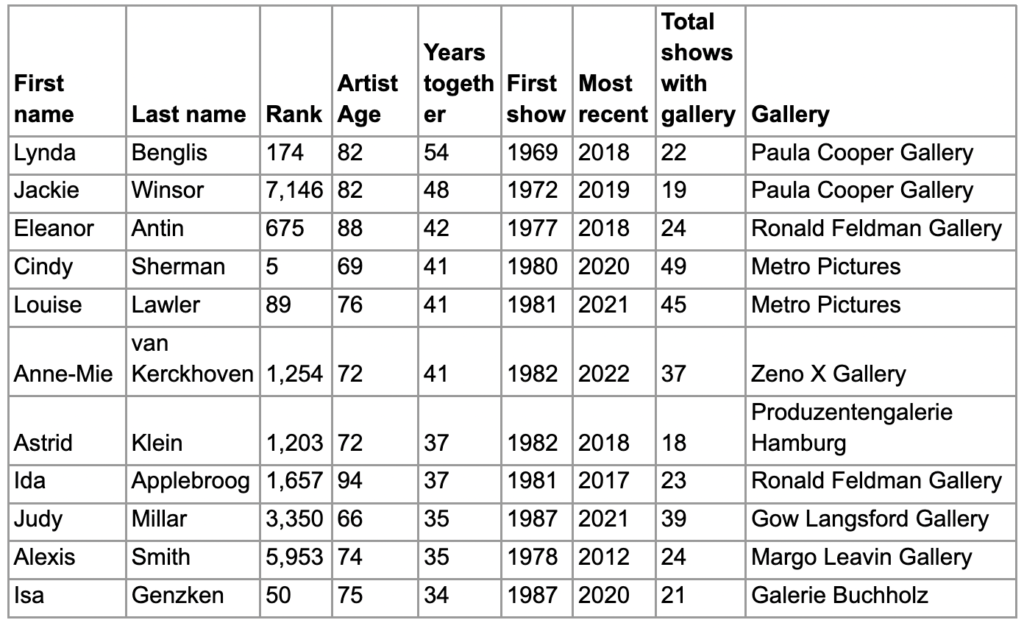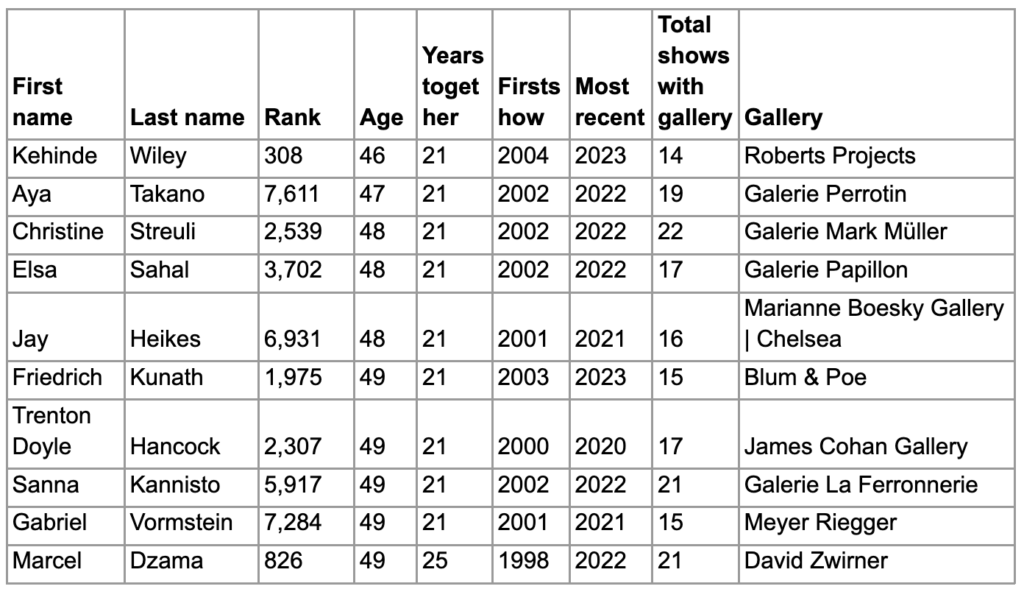
More than 20 Years…
Of the many types of relationships that we establish in our lifetime, for an artist; the importance and influence of collaborators, lovers, friends, partners, or muses are all well documented, but there is another impactful relationship that is sometimes overlooked: that of a partnership with a gallery that withstands the test of time.
Curious about this particular alliance, we searched our data for artists who have had relationships with galleries for more than 20 years. It turns out there are many: according to our data, over 4,500 (living) long-term artist-gallery relationships appear to have lasted for over 20 years and up to 72 years. It should be noted that this number refers to the number of relationships, of which multiple cases are with one artist and numerous galleries.
Listed below are the top ten artists who have had the longest relationships with a gallery, combined with the most exhibitions. To be included on this list a gallery had to have organised a bare minimum of an average of one exhibition every two years for the artist to participate in (whether that was a solo or group show).
N.B. Both the first show and the most recent show refers to the artists shows at the gallery mentioned and can be either a solo or group show.
1. MEN

Upon exploring this data, it became immediately apparent that all the top-performing artists were men. Though we can’t level the playing field of the past, we can at least list the top ten women artists as well. We encourage you to take a look at the marked difference between the men’s and women’s total shows with a gallery in relation to the years together with that gallery.
2. WOMEN

In addition to the gender biases seen above, a keen eye would also have noticed that all of the artists listed were white. Intent to see if these inequalities have changed over time, we created another list by looking at the lower end of the results of our data query. These relationships, all established in the early 2000s, were naturally developed in different social and political contexts to that of the previous groups, and that can be seen in the results which are slightly improved, with a ratio of 6 men to 4 women. The racial distribution is still behind with a ratio of 7 White artists to 3 Black and Asian artists.
3. 20-YEAR MARK

The curious thing about data is how quickly it highlights inequalities. We began this query with the simple plan of exploring in more detail some interesting long-term artist-gallery relationships, but what the data showed us was far more relevant than an individual story. By being able to see the bigger picture, it’s far easier to see where the gaps are, and therefore were to fill those gaps in the future.
Let’s make history happen,
The Artfacts Team
